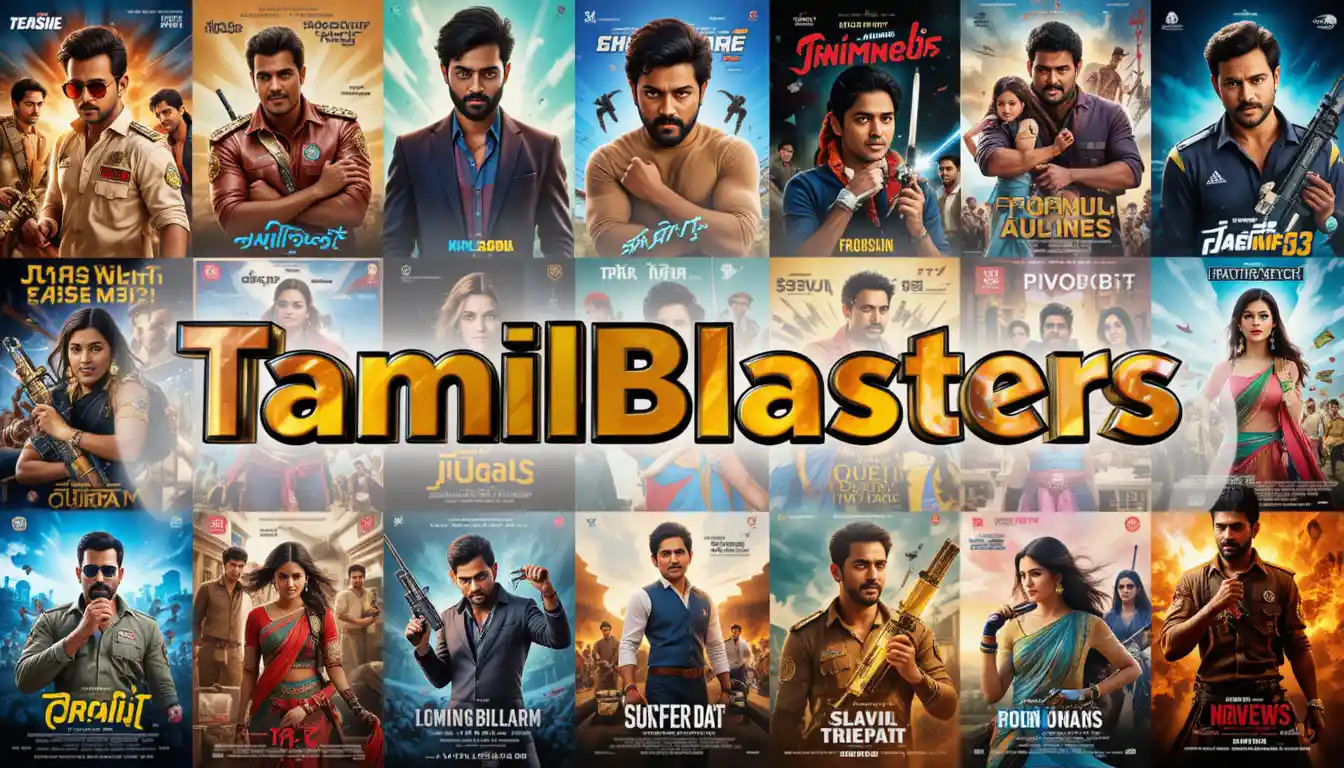Ever wondered how a newly released Tamil film ends up on your phone screen within hours of its theatrical debut? The rise of online platforms offering unauthorized content has dramatically reshaped the entertainment landscape, presenting both convenience for viewers and significant challenges for the film industry.
Tamilblasters.org.in, a name that frequently surfaces in discussions about digital piracy, exemplifies this phenomenon. This platform, along with numerous others, has become a go-to source for users seeking to download or stream movies, TV series, and other multimedia content without proper authorization. But what exactly fuels the popularity of such sites, and what are the broader implications of their existence? To truly understand Tamilblasters, one must delve into the intricate web of digital piracy, its evolution, and the strategies employed to combat it.
Tamilblasters operates within a digital ecosystem where technological advancements and consumer behavior intersect. The internet's vast reach, coupled with the increasing affordability of high-speed data services, has created an environment ripe for the proliferation of unauthorized content. Historically, piracy was confined to physical mediums like pirated DVDs and CDs. However, the digital age has transformed it into a borderless and easily accessible activity.
- Unveiling The Enigmatic Josh Gates An Explorers Tale Now
- Spotlight On Dansby Swansons Children Life In The Public Eye
The website's domain, tamilblasters.org.in, has been flagged with a medium to low risk rating. However, users are always advised to conduct their own due diligence, as the evaluation of the website was automatically generated. Manual checks are recommended to ascertain the site's safety and credibility.
Tamilblasters.org.in's global ranking in April 2025 was #1403926, and it held the #2538 position in the investing category. Further analytics and market share data are available for those seeking a more comprehensive understanding of the site's digital footprint.
The allure of Tamilblasters lies in its promise of free and readily available entertainment. Users can access the latest releases of Tamil, Telugu, Malayalam, and Kannada movies in high definition. This accessibility, while convenient, comes at a significant cost to the film industry, impacting revenue streams and creative incentives.
- Unveiling Celebrity Kids Ages The Privacy Puzzle Of Their Age
- Decoding Pax Thien Jolie Pitt Meaning Amp Context Analysis
Understanding the mechanisms through which Tamilblasters and similar sites operate is crucial for developing effective countermeasures. These platforms often employ various tactics to evade detection and maintain their online presence, including the use of proxy servers and domain hopping. Despite these efforts, authorities and copyright holders are constantly working to identify and shut down these illegal operations.
Techbuzzard, in an article dated March 8, 2022, estimated that it would take 7 minutes to read an overview of Tamilblasters, highlighting its status as one of the most accessible platforms for Tamil and Telugu movies. While numerous proxy sites facilitate smooth operation, occasional disruptions necessitate alternative access points for users seeking uninterrupted content.
The impact of Tamilblasters extends beyond mere copyright infringement. The availability of unauthorized content can significantly affect the revenue generated by filmmakers, distributors, and exhibitors. This financial strain can, in turn, stifle creativity and innovation within the industry.
The content offered on platforms like Tamilblasters often originates from various sources, including illegal recordings in cinemas, hacked streaming accounts, and unauthorized duplication of digital files. These practices not only violate copyright laws but also undermine the integrity of the creative process.
Combating digital piracy requires a multifaceted approach involving legal action, technological solutions, and public awareness campaigns. Copyright holders and law enforcement agencies work together to track down and prosecute those involved in the operation of illegal streaming and downloading sites. Technological solutions, such as digital watermarking and content protection systems, help to prevent unauthorized duplication and distribution.
Tamilblasters' operations are not confined to a single domain. The site frequently changes its URL to evade detection and maintain accessibility. This cat-and-mouse game between copyright enforcers and piracy platforms underscores the dynamic nature of the problem.
The existence of sites like Tamilblasters highlights the complex interplay between technology, consumer behavior, and legal frameworks. While the convenience of accessing free content may be appealing to some users, the long-term consequences for the entertainment industry are significant.
Ultimately, addressing digital piracy requires a shift in mindset. Consumers need to be educated about the ethical and economic implications of their choices. Supporting legitimate streaming services and purchasing authorized copies of movies and TV shows is essential for sustaining a healthy and vibrant entertainment industry.
The proliferation of online piracy platforms like Tamilblasters presents a formidable challenge to the entertainment industry. By offering unauthorized access to copyrighted content, these sites undermine the revenue streams of filmmakers, distributors, and exhibitors. This, in turn, can stifle creativity and innovation within the industry.
To effectively combat digital piracy, a multi-pronged approach is necessary. This includes legal action against operators of piracy websites, technological measures to protect copyrighted content, and public awareness campaigns to educate consumers about the ethical and economic implications of their actions.
Copyright holders and law enforcement agencies are constantly working to track down and shut down illegal streaming and downloading sites. However, these sites often employ various tactics to evade detection and maintain their online presence.
Technological solutions, such as digital watermarking and content protection systems, can help to prevent unauthorized duplication and distribution of copyrighted content. However, these measures are not always foolproof, and pirates are constantly finding new ways to circumvent them.
Public awareness campaigns can play a crucial role in educating consumers about the ethical and economic implications of digital piracy. By highlighting the negative impact of piracy on the entertainment industry, these campaigns can encourage consumers to support legitimate streaming services and purchase authorized copies of movies and TV shows.
The rise of online piracy is a complex issue with no easy solutions. However, by working together, copyright holders, law enforcement agencies, and consumers can help to create a more sustainable and equitable entertainment ecosystem.
The battle against digital piracy is an ongoing process, requiring constant vigilance and adaptation. As technology evolves, so too do the methods employed by pirates. Staying one step ahead requires continuous innovation and collaboration.
While the allure of free content may be tempting, it's important to consider the long-term consequences of supporting piracy. By choosing to access content through legitimate channels, consumers can help to ensure the continued viability of the entertainment industry.
The impact of digital piracy extends beyond the entertainment industry. It can also have negative effects on other sectors of the economy, such as the technology and advertising industries.
In addition to legal and technological measures, social and cultural norms also play a role in shaping attitudes towards digital piracy. By promoting a culture of respect for copyright, we can help to reduce the demand for unauthorized content.
Ultimately, the fight against digital piracy is a fight for the future of creativity. By supporting legitimate creators and respecting their rights, we can help to ensure that the entertainment industry continues to thrive.
The challenge of digital piracy is not unique to the Tamil film industry. It affects film industries around the world, as well as other creative sectors such as music, publishing, and software.
To address the global challenge of digital piracy, international cooperation is essential. Countries need to work together to harmonize their laws and enforcement efforts.
In addition to government action, the private sector also has a role to play in combating digital piracy. Technology companies can develop and implement solutions to protect copyrighted content, while advertisers can refuse to support websites that promote piracy.
Consumers can also take steps to protect themselves from the risks associated with digital piracy. Downloading content from unauthorized sources can expose users to malware and other security threats.
By being informed and making responsible choices, consumers can help to create a safer and more sustainable online environment.
The fight against digital piracy is a shared responsibility. By working together, we can protect the rights of creators and ensure that the entertainment industry continues to flourish.
The debate over digital piracy often involves discussions about access to information and freedom of expression. However, it's important to remember that copyright is a fundamental right that protects the interests of creators.
Balancing the rights of creators with the public interest is a complex task. However, it's essential to ensure that copyright laws are fair and effective in the digital age.
The future of the entertainment industry depends on our ability to address the challenge of digital piracy. By embracing innovation and collaboration, we can create a sustainable ecosystem that benefits both creators and consumers.
The ease with which digital content can be copied and distributed has created new challenges for copyright law. Traditional copyright laws were designed for a world where physical copies were the primary means of distribution.
The digital age requires a rethinking of copyright law to address the unique challenges of online piracy. This includes updating laws to address new forms of copyright infringement, such as streaming and file sharing.
The legal landscape surrounding digital piracy is constantly evolving as courts grapple with new technologies and business models. Landmark cases have helped to clarify the scope of copyright law in the digital age.
The economic impact of digital piracy is significant, affecting not only the entertainment industry but also the broader economy. Studies have estimated that digital piracy costs the global economy billions of dollars each year.
The social impact of digital piracy is also a concern. It can undermine respect for intellectual property rights and contribute to a culture of lawlessness.
The cultural impact of digital piracy is debated. Some argue that it promotes wider access to cultural works, while others argue that it stifles creativity and innovation.
The debate over digital piracy is often framed as a conflict between copyright holders and consumers. However, it's important to remember that digital piracy harms creators and undermines the economic viability of the entertainment industry.
The solution to digital piracy requires a multi-faceted approach that includes legal, technological, and educational measures.
The key to combating digital piracy is to make it easier and more affordable for consumers to access content through legitimate channels.
The future of the entertainment industry depends on our ability to find a balance between protecting copyright and promoting access to information.
Ultimately, the success of the fight against digital piracy will depend on the cooperation of all stakeholders, including copyright holders, consumers, technology companies, and governments.
The complexities surrounding Tamilblasters and its role in digital piracy extend beyond the surface-level act of illegal downloading. The platform's existence raises fundamental questions about intellectual property rights, the accessibility of entertainment, and the economic sustainability of the film industry.
While Tamilblasters may offer a seemingly convenient way to access movies and TV shows, its unauthorized distribution practices have far-reaching consequences. These practices not only violate copyright laws but also deprive filmmakers and other creators of their rightful compensation.
The allure of free content often overshadows the ethical and economic implications of digital piracy. Many users may not fully understand the harm caused by accessing content through unauthorized channels like Tamilblasters.
The battle against digital piracy requires a concerted effort from all stakeholders, including copyright holders, law enforcement agencies, and consumers. By working together, we can create a more sustainable and equitable entertainment ecosystem.
The challenge of digital piracy is not insurmountable. By embracing innovative solutions and fostering a culture of respect for intellectual property rights, we can ensure that the entertainment industry continues to thrive.
The future of the Tamil film industry, and the entertainment industry as a whole, depends on our ability to address the challenges posed by digital piracy. By supporting legitimate creators and respecting their rights, we can help to create a vibrant and sustainable creative landscape.
As technology continues to evolve, the landscape of digital piracy will undoubtedly continue to change. It's essential to remain vigilant and adapt our strategies to combat new forms of copyright infringement.
The fight against digital piracy is not just about protecting the interests of copyright holders. It's also about preserving the creative ecosystem and ensuring that future generations of filmmakers and artists have the opportunity to thrive.
By making informed choices and supporting legitimate creators, we can all play a part in creating a more sustainable and equitable entertainment industry.
Tamilblasters serves as a stark reminder of the ongoing challenges posed by digital piracy. However, it also highlights the resilience and adaptability of the entertainment industry in the face of adversity.
The fight against digital piracy is a marathon, not a sprint. It requires sustained effort and a commitment to upholding intellectual property rights.
Ultimately, the success of our efforts to combat digital piracy will depend on our ability to foster a culture of respect for creativity and innovation.
- Breaking Is Alicia Still Alive In 2024 The Real Status
- Explore Gosford Park Filming Locations Map A Visual Guide


